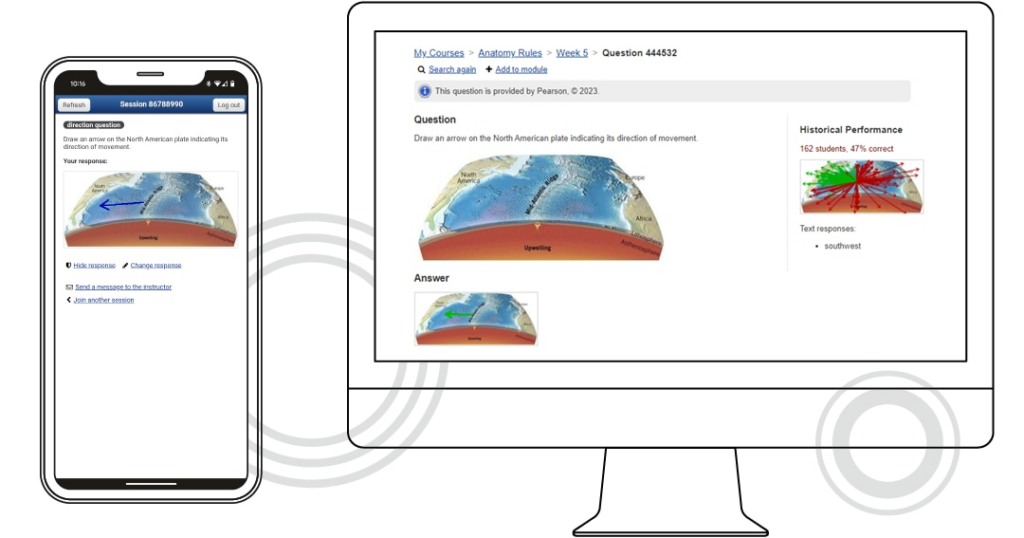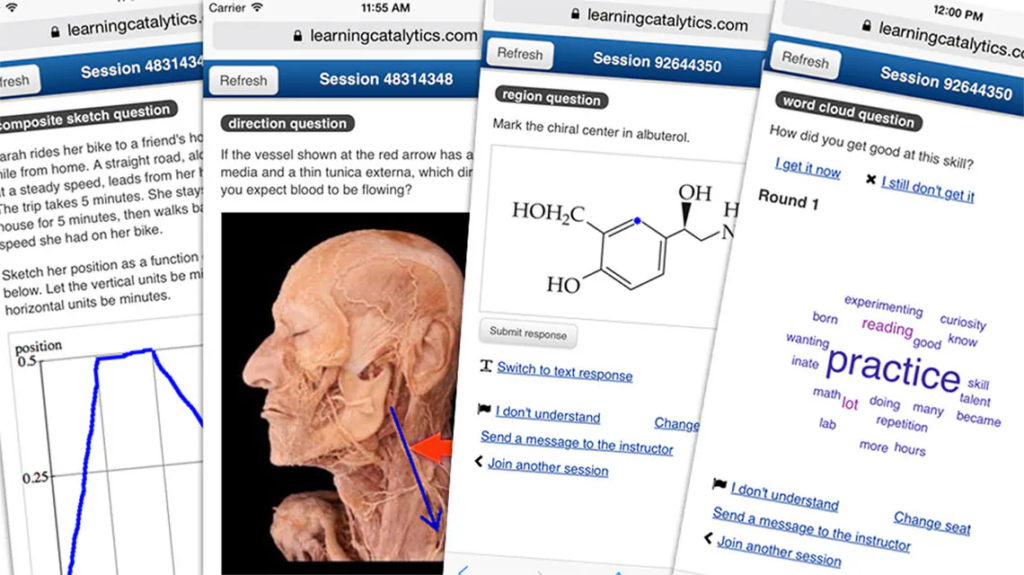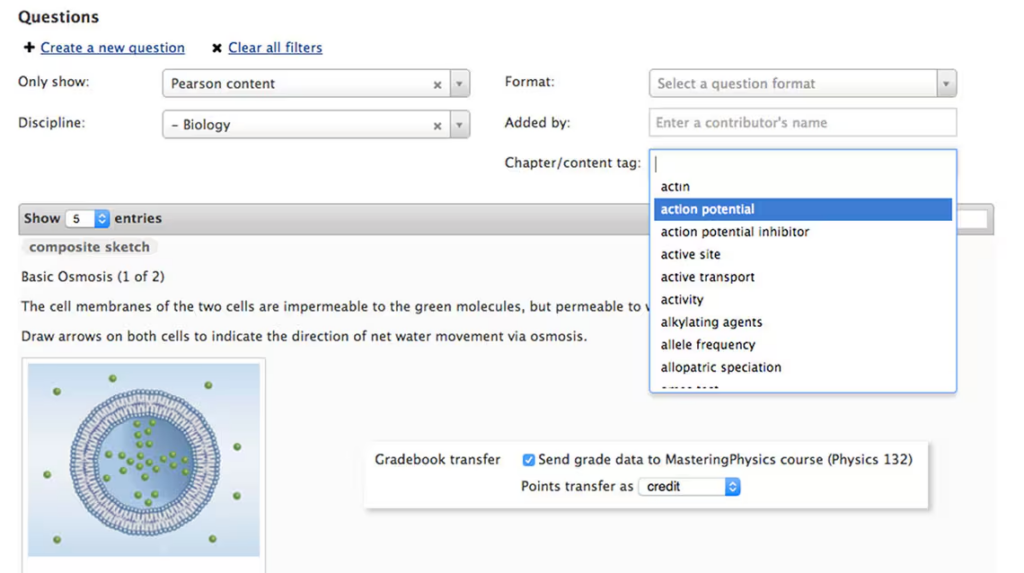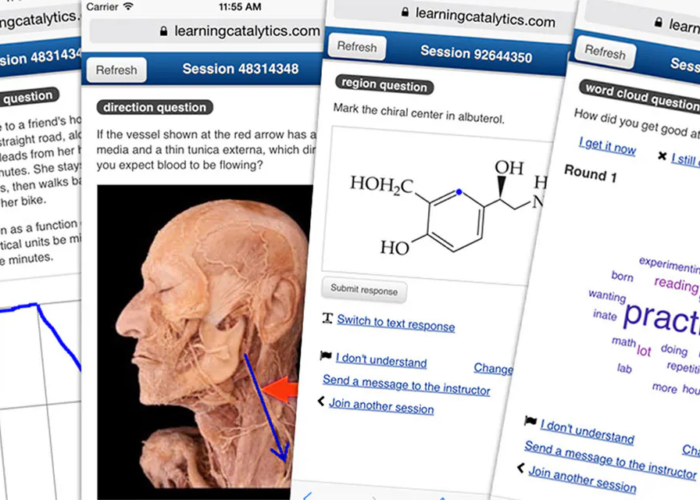Engaging students during lessons can sometimes feel like a herculean task. Learning Catalytics steps in as an innovative tool designed to breathe life into classroom interaction.
Our article will guide you through the practical ways this technology can transform passive listeners into active participants.
Key Takeaways
- Learning Catalytics turns traditional classrooms into interactive spaces by allowing educators to create diverse question types and activities, which students respond to in real-time using their own devices.
- The tool encourages critical thinking by prompting students to apply knowledge, analyze scenarios, and synthesize ideas through a range of question styles and collaborative discussions.
- It promotes active learning as teachers can use it for real-time assessments that guide teaching strategies and foster student participation in a participative educational environment.
- Features like mobile device compatibility and the sophisticated classroom assessment system provide seamless interaction and valuable insights into student comprehension levels.
- By integrating Learning Catalytics into lesson plans, teachers can enhance classroom engagement, facilitate a better understanding of concepts, and develop students’ critical thinking skills.

Understanding Learning Catalytics
Learning Catalytics harnesses the power of technology to transform traditional classrooms into dynamic learning environments. It serves as a bridge that connects student devices, such as laptops and smartphones, with engaging course content tailored by instructors.
At its core, Learning Catalytics enables educators to pose a variety of question types—from multiple-choice to graphical questions—and collect responses in real-time. This interaction not only spurs deeper understanding but also makes room for immediate adjustments in teaching methods.
The system shines particularly bright during collaborative problem-solving sessions where students can be grouped according to their response patterns. Peer instruction takes on a new dimension as learners discuss concepts amongst themselves, reinforcing knowledge through dialogue rather than passive absorption.
With each student’s input valued and visible, classroom participation skyrockets, paving the way for an inclusive and stimulating educational experience.
Pedagogical Benefits of Learning Catalytics
Learning Catalytics engages students in interactive activities, encourages critical thinking, and promotes active learning by providing a platform for student-centred engagement. With open-ended questions and collaborative tools, it help develop students’ critical thinking skills while facilitating classroom participation.
Engages students in interactive activities
Learning Catalytics takes student engagement to the next level with a host of interactive activities that push them beyond passive learning. As students dive into these dynamic exercises, they are not just absorbing information; they’re actively applying it.
This hands-on approach is fundamental in helping them develop critical thinking and problem-solving skills.
Teachers can unleash the full potential of collaboration through conceptual discussions driven by Learning Catalytics. Students challenge each other’s ideas, expand their understanding, and discover new perspectives as they work together.
The tool adapts to various learning styles by offering different types of questions and incorporating multimedia content, ensuring every student has the opportunity to participate fully and effectively in this vibrant educational environment.
Encourages critical thinking
Beyond engaging students through interactive activities, Learning Catalytics takes learning a step further by fostering critical thinking skills. As students wrestle with diverse question types—from multiple-choice to free response—they’re compelled to tap into higher-order thinking skills.
This process requires them not only to recall information but also to apply their knowledge in complex scenarios, analyze different viewpoints, and synthesize new ideas from the given data.
The platform’s dynamic environment promotes analytical thinking as students navigate problems that demand logical reasoning and decision-making abilities. Cognitive development is nurtured as they engage in reflective and creative thinking during inquiry-based learning sessions.
With Learning Catalytics at the helm of instruction, educators empower learners to develop robust metacognitive skills essential for understanding their thought processes—preparing them for real-world challenges where effective problem-solving is key.
Promotes active learning
To further enhance student engagement, Learning Catalytics promotes active learning in the classroom. By implementing this interactive tool, instructors can create an environment that encourages participatory education and collaborative activities among students.
This dynamic approach fosters engaged learning through interactive quizzes, group discussions, and other forms of participative education. With Learning Catalytics, instructors can create a more engaging and interactive classroom experience that leads to higher levels of knowledge retention and understanding.
Instructors utilizing Learning Catalytics have the opportunity to foster an environment conducive to active participation and encourage students to take ownership of their learning journey.
Features of Learning Catalytics
Learning Catalytics is a web-based platform with a sophisticated classroom assessment system that is compatible with mobile devices, making it convenient and accessible for students to use.
To learn more about how these features can maximize student engagement, continue reading this informative blog.
Web-based platform
The web-based platform of Learning Catalytics offers instructors a versatile tool for enhancing student engagement and participation in the learning process. Through this interactive online platform, educators can create customized questions and activities tailored to their teaching objectives.
Utilizing real-time assessment features, instructors can gauge student understanding instantly, fostering an environment of active participation. Furthermore, the platform’s compatibility with mobile devices enables students to respond to questions using their technology, promoting a seamless and engaging educational experience.
Instructors can also benefit from valuable data analysis tools that provide insights into student responses and comprehension levels. With this information at their disposal, teachers are empowered to adapt their teaching methods effectively to meet the specific needs of their students.
Sophisticated classroom assessment system
The web-based platform of Learning Catalytics seamlessly integrates a sophisticated classroom assessment system, which enables instructors to gauge student understanding and address any misconceptions or gaps in knowledge during the learning process.
This system offers real-time feedback to both students and instructors, allowing for immediate assessment and adjustment of teaching strategies based on individual needs. With customizable assessments tailored to specific learning objectives and classroom dynamics, educators can enhance student engagement through active participation and collaboration while promoting critical thinking skills.

Mobile device compatibility
Learning Catalytics offers mobile device compatibility, allowing students to engage in interactive activities using their smartphones or tablets. This means that students can access learning materials and participate in classroom activities from anywhere, both inside and outside the classroom.
The platform’s smartphone and tablet compatibility enhances student engagement by providing a seamless way for them to interact with course content, fostering a more dynamic and flexible learning environment.
Next, let’s delve into the features of Learning Catalytics’ web-based platform.
Maximizing Student Engagement with Learning Catalytics
To maximize student engagement with Learning Catalytics, educators can implement the tool in their teaching, utilize the question navigator, and use it for effective classroom management.
This enables students to actively participate and develop critical thinking skills through interactive learning experiences.
Implementing Learning Catalytics in Your Teaching
Implementing Learning Catalytics in your teaching allows for real-time assessment of student understanding and engagement.
- Utilize the interactive features to engage students in discussions, group activities, and problem-solving exercises, fostering critical thinking skills.
- Encourage student participation by posing thought-provoking questions that prompt active involvement and collaboration among peers.
- Leverage the immediate feedback to intervene and provide targeted support to students based on their performance during class activities.
- Integrate Learning Catalytics into your lesson plans to promote active learning and enhance student comprehension through interactive teaching tools.
Utilizing the question navigator
The question navigator serves as a valuable tool for promoting active learning and encouraging student engagement. By using targeted questioning, instructors can prompt meaningful discussions and collaborative problem-solving among students.
This real-time assessment tool provides immediate feedback on student understanding, enabling instructors to intervene if necessary and guide instructional decisions based on the results.
Implementing the question navigator during lessons helps increase interactive learning, encourage student participation, and foster critical thinking skills. Through this process, both educators and students benefit from enhanced classroom interactions and improved comprehension of the material.
Learning Catalytics Review for Classroom Management
Maximizing student engagement through classroom management becomes seamless with Learning Catalytics. The platform allows instructors to monitor and encourage active participation, creating an interactive and collaborative learning environment.
Instant feedback features facilitate a dynamic atmosphere, nurturing critical thinking skills among students while promoting a culture of constant involvement.
Instructors can efficiently guide the flow of activities, adapt to the real-time needs of the class, and foster better interaction between students. Implementing Learning Catalytics streamlines classroom management, ensuring that every student is heard and involved in the learning process.
With its comprehensive tools for engagement, it transforms traditional teaching into a vibrant experience rich with collaboration and critical thought.

Conclusion
In conclusion, educators can enhance student engagement by integrating Learning Catalytics into their teaching practices. This critical thinking tool promotes active learning and participation, allowing for real-time interaction and feedback during lectures.
Additionally, it fosters collaborative learning through peer interaction and multimedia resources that make the educational experience more immersive. By utilizing Learning Catalytics’ features effectively, instructors can create a dynamic and participatory classroom environment that encourages critical thinking and communication skills in students.
(Image credit: Learning Catalytics)
Frequently Asked Questions
1. How does Learning Catalytics enhance student engagement?
Learning Catalytics enhances student engagement by allowing interactive participation through polls, open-ended questions, and discussions during lectures.
2. What types of questions can be used with Learning Catalytics for active learning?
You can use multiple-choice, free-response, numeric entry, and ranking questions to engage students in critical thinking and problem-solving activities.
3. Can Learning Catalytics be accessed on different devices?
Yes, Learning Catalytics can be accessed on various devices including laptops, tablets, and smartphones for student flexibility.
4. How does Learning Catalytics facilitate real-time assessment of student understanding?
It allows instructors to instantly gauge the comprehension levels of students through immediate feedback on their responses to questions posed during class.
5. Is training required to utilize Learning Catalytics effectively as an instructional tool?
Training may be beneficial for instructors to fully harness the potential of this platform in promoting active learning and critical thinking among students.





